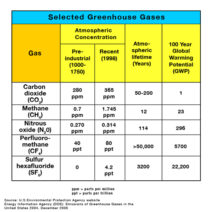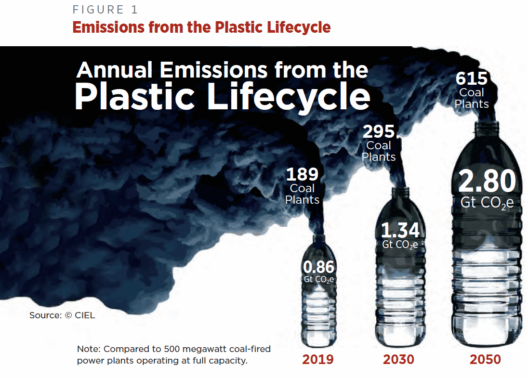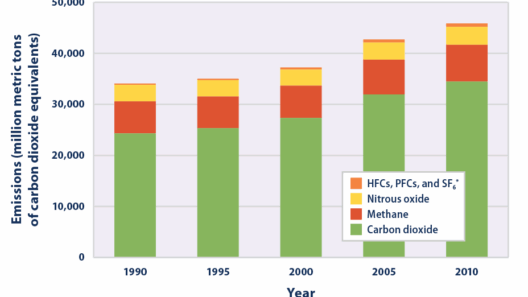El Niño, a term derived from the Spanish for “the Christ child,” conjures images of a mischievous child wreaking havoc on our climate systems. This periodic phenomenon, characterized by the periodic warming of surface waters in the central and eastern Pacific Ocean, disrupts typical weather patterns across the globe. However, with the relentless advance of global warming, the fury of El Niño is not merely a capricious child’s play; it has metamorphosed into a tempest of unprecedented proportions. This intricate interplay between El Niño and climate change underscores a growing threat that humanity must confront: the surge in extreme climate patterns.
Historically, El Niño has been a significant catalyst for weather disturbances. It engenders alterations in atmospheric pressure, leading to increased precipitation in some regions and devastating droughts in others. As if orchestrating a chaotic symphony, El Niño crafts extremes: the lush forests of the Amazon may experience torrential downpours, while the arid expanses of Australia may succumb to parched conditions. This oscillation from abundance to scarcity paints a portrait of nature’s capricious temperament. Yet, beneath this seemingly natural ebbs and flows lie the steely fingers of global warming, tightening their grip and exacerbating these climatic extremes.
Global warming, primarily fueled by greenhouse gas emissions from human activities, is acting as a heat lamp, intensifying the very conditions El Niño relies upon to manifest. Rising ocean temperatures mean that when El Niño emerges, its impacts are more pronounced. The ocean acts as a massive reservoir of heat; as it warms, it releases energy into the atmosphere with greater ferocity, creating an explosive concoction of climatic abnormalities. The “Christ child” is no longer merely mischievous; he has transformed into a formidable force, with the capacity to inflict havoc globally, reshaping agricultural landscapes, inciting violent storms, and fostering floods that sweep away communities.
To comprehend the full extent of El Niño’s amplified fury requires an exploration into how it interacts with other climate phenomena. For instance, the Pacific Decadal Oscillation (PDO) and Arctic Oscillation (AO) can modulate the intensity and duration of El Niño events. When these oscillations conspire with a warming planet, the result is a kaleidoscopic chaos in weather patterns that makes it increasingly difficult for communities to adapt. This multifaceted relationship creates a labyrinth of climate variability, wherein farmers cannot rely on seasonal patterns for planting crops, and regions previously immune to severe weather now find themselves ensnared in a deadly cycle.
The financial ramifications of El Niño, propelled by global warming, are staggering. Agriculture, often viewed as the backbone of economies, suffers immensely from the climatic fluctuations. For instance, when El Niño leads to diminished rainfall in the breadbasket regions of the U.S. Midwest, crop yields plummet. The ripple effects extend beyond local economies, traversing borders and inflating food prices globally. Moreover, insurance claims surge as communities grapple with rebuilding after devastation wrought by floods, droughts, and wildfires—each exacerbated by the intensified climate patterns linked to El Niño.
Furthermore, the social implications are profound. Vulnerable populations, often living in low-lying coastal areas or relying on subsistence farming, find themselves at the epicenter of this environmental tempest. As storms destroy livelihoods and rising temperatures compromise water supplies, displacement becomes a grim reality. Climate refugees emerge, forced to migrate in search of stability, fleeing the once-familiar embrace of their homelands. This shift in demographics introduces additional stressors on urban infrastructure and resources, perpetuating a cycle of inequity and suffering.
The convergence of El Niño’s fury with global warming heralds an urgent call for action. Engaging in climate adaptation and mitigation strategies becomes paramount. We must transcend mere acknowledgment of these threats and transition into proactive measures, harnessing innovation and community resilience. Transitioning to renewable energy sources minimizes greenhouse gas emissions, while investing in sustainable agricultural practices can bolster agricultural resilience against flooded fields and parched earth.
Equally imperative is the need for global collaboration. Climate change is a ubiquitous adversary, indifferent to national borders. The international community must unite, pooling resources and knowledge to combat the escalating extremities brought forth by El Niño and climate change. Building infrastructure capable of withstanding extreme weather conditions, improving forecasting models, and implementing early warning systems are vital steps that can save lives and safeguard livelihoods.
In essence, the narrative of El Niño’s fury, now exacerbated by the insidious creep of global warming, is one of interconnectedness—linking together climate science, economic stability, and social justice. As humanity stands today, teetering on the precipice of what could be a profound climatic shift, our response must be steadfast and multifaceted. Embracing adaptive strategies, advocating for systemic changes, and fostering community collaboration will fortify our defenses against the tempestuous behaviors of a warming world.
The time for action is now. The images of calamity—drenched lands, scorched earth, and displaced families—are not mere photographs; they are vivid warnings etched into the consciousness of our collective future. We must confront El Niño not as an isolated phenomenon, but rather as a symptom of a larger ailment—one that we have the power to combat by rallying together and embracing our shared responsibility for the planet.







